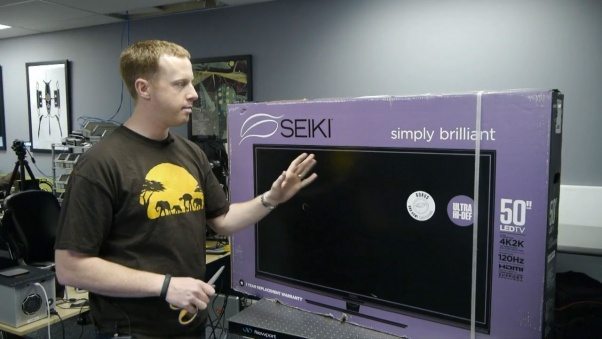
This article was originally published on www.display-central.com.
In all of the glamour surrounding the sheer visual appeal of UHD TV, or 4K TV, there’s a few practical considerations that beg analysis, aside from the obviously increased cost.
With higher resolution, the notion of “viewing distance” takes on some interesting aspects. It’s been generally accepted that the “optimum” distance from which to observe a 1080-line display – so that an observer with 20/20 visual acuity can just resolve the pixels – is about 3.2 times the picture height. On a 1080-line 42” display, that comes to about five-and-a-half feet, although research shows that most homeowners place the set somewhat further away – usually about 9 feet away.
But at 4K, the optimum distance becomes 1.6 picture-heights, so that at the same 1080-line-display viewing distance of 5.5 feet, one needs an 84”-diagonal display: not surprisingly, a size already in production for both consumer and professional use, despite its gargantuan proportions. While such a display may seem uncomfortably large, the 58-degree viewing angle it would subtend at the above viewing distance approaches a truly immersive and lifelike experience for the viewer. But practically speaking, it would be bizarre to consider sitting five or six feet away from a seven-foot screen.
We’re already seeing the usual numbers game, too, with at least one display being hawked as “4K-compatible” (as it accepts 4K signals), but having only 2560 x 1440 actual resolution, what one might call “2/3rd 4K.”
Of course, UHD TV has a higher pixel rate than HDTV. But going from HD to 4K does not merely quadruple the bitrate, it multiplies it by at least 8, since no one is likely to transmit 4K in interlaced form (there isn’t even a specification for that). And bit depth can go to 12 bits per pixel, and frame rate to 120 (or higher)! Taken together, this means that the raw bitrate to move 4K video will be in excess of 10 Gb/s, well beyond the capability of today’s consumer interfaces. (And don’t forget to add more for 3D.) For that reason, we’re seeing the first crop of 4K sets offering quad-HDMI interfaces. (Don’t worry; single-line interfaces are under development, with optical fiber being a likely forerunner.)
Getting back to cost, we’re already starting to approach the silicon density limits of high-density solid state materials, and that means that quality control issues are likely to forestall any rapid price evolution, even assuming demand takes off. The problem is in fact worsened as one goes down in screen size, since the pixel density increases. We may be at the point where a new technology, like carbon nanotubes, may provide a viable alternative, but experts feel that practical solutions could be ten years away.
So, by all means, if you’ve got the bucks and the space, go ahead and spring for an ultra-HD set right now – but be aware that the limited native 4K content you’ll be watching – for some time – will be from an attached media server. – Aldo Cugnini

